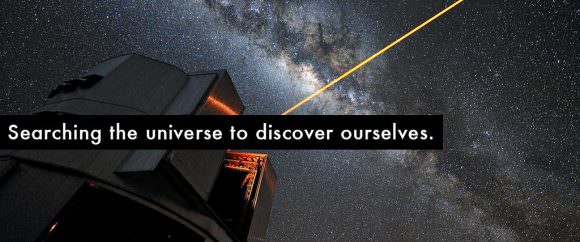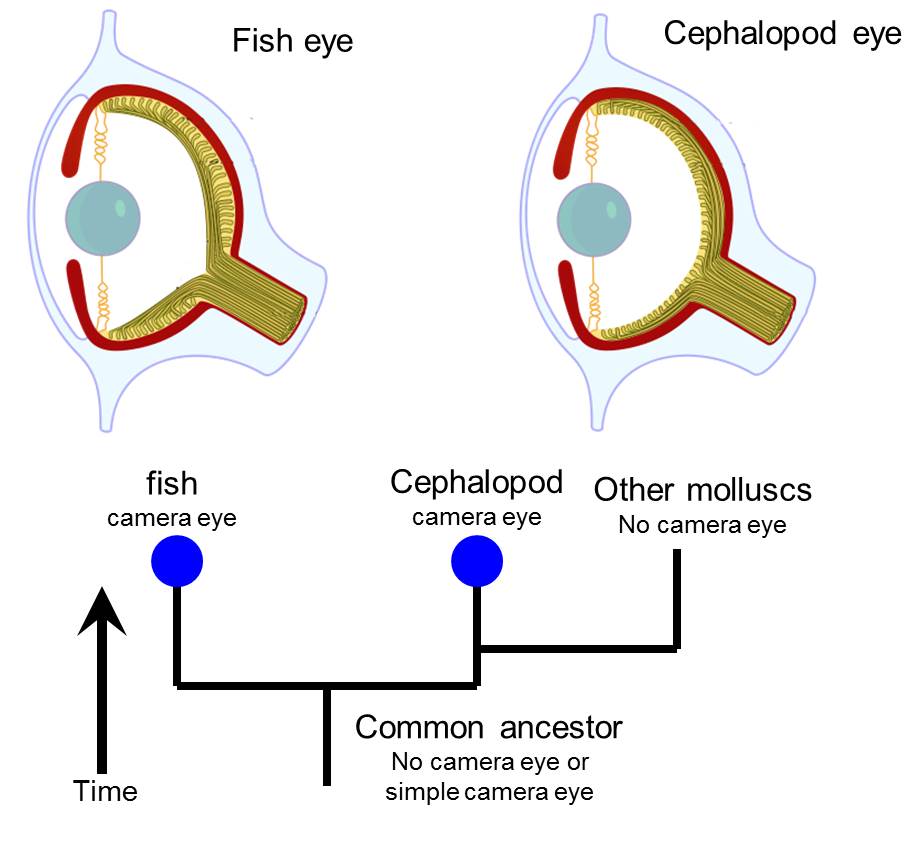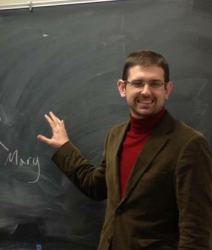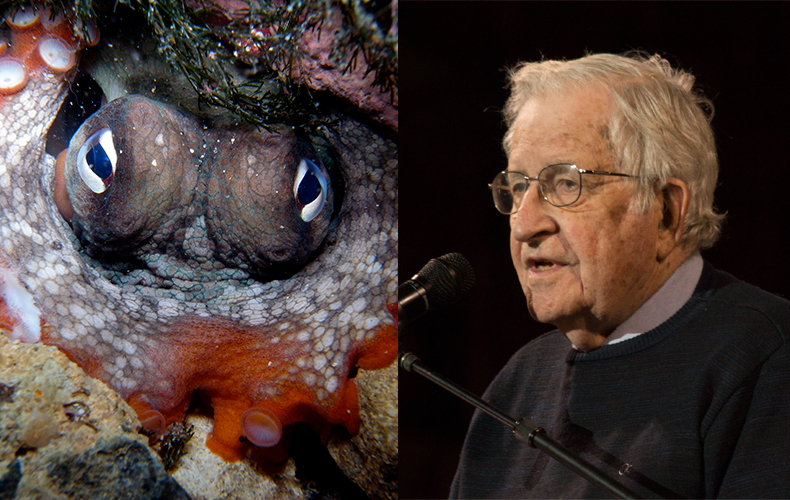The METI Symposium
The symposium
How could you devise a message for intelligent creatures from another planet? They wouldn’t know any human language. Their ‘speech’ might be as different from ours as the eerie cries of whales or the twinkling lights of fireflies. Their cultural and scientific history would have followed its own path. Their minds might not even work like ours. Would the deep structure of language, its so called ‘universal grammar’ be the same for aliens as for us? A group of linguists and other scientists gathered on May 26 to discuss the challenging problems posed by devising a message that extraterrestrial beings could understand. There are growing hopes that such beings might be out there among the billions of habitable planets that we now think exist in our galaxy. The symposium, called ‘Language in the Cosmos’ was organized by METI International. It took place as part of the National Space Society’s International Space Development Conference in Los Angeles. The Chair of the workshop was Dr. Sheri Wells-Jensen, a linguist from Bowling Green State University in Ohio.
What is METI International?
‘METI’ stands for messaging to extraterrestrial intelligence. METI International is an organization of scientists and scholars that aims to foster an entirely new approach in our search for alien civilizations. Since 1960, researchers have been looking for extraterrestrials by searching for possible messages they might send to us by radio or laser beams. They have sought the giant megastructures that advanced alien societies might build in space. METI International wants to move beyond this purely passive search strategy. They want to construct and transmit messages to the planets of relatively nearby stars, hoping for a response.
One of the organization’s central goals is to build an interdisciplinary community of scholars concerned with designing interstellar messages that can be understood by non-human minds. More generally, it works internationally to promote research in the search for extraterrestrial intelligence and astrobiology, and to understand the evolution of intelligence here on Earth. The daylong symposium featured eleven presentations. It main theme was the role of linguistics in communication with extraterrestrial intelligence.

This article
This article is the first in a two part series. It will focus on one of the most fundamental issues addressed at the conference. This is the question of whether the deep underlying structure of language would likely be the same for extraterrestrials as for us. Linguists understand the deep structure of language using the theory of ‘universal grammar’. The eminent Linguist Noam Chomsky developed this theory in the middle of the twentieth century.
Two interrelated presentations at the symposium addressed the issue of universal grammar. The first was by Dr. Jeffery Punske of Southern Illinois University and Dr. Bridget Samuels of the University of Southern California. The second was given by Dr. Jeffrey Watumull of Oceanit, whose coauthors were Dr. Ian Roberts of the University of Cambridge, and Dr. Noam Chomsky himself, of the Massachusetts Institute of Technology.
Chomsky’s universal grammar-For humans only?
Universal grammar
Despite its name, Chomsky originally took his ‘universal grammar’ theory to imply that there are major, and maybe insuperable barriers to mutual understanding between humans and extraterrestrials. Let’s first consider why Chomsky’s theories seemed to make interstellar communication virtually hopeless. Then we’ll examine why Chomsky’s colleagues who presented at the symposium, and Chomsky himself, now think differently.
Before the second half of the twentieth century, linguists believed that the human mind was a blank slate, and that we learned language entirely by experience. These beliefs dated to the seventeenth century philosopher John Locke and were elaborated in the laboratories of behaviorist psychologists in the early twentieth century. Beginning in the 1950’s, Noam Chomsky challenged this view. He argued that learning a language couldn’t simply be a matter of learning to associate stimuli with responses. He saw that young children, even before the age of 5, can consistently produce and interpret original sentences that they had never heard before. He spoke of a “poverty of the stimulus”. Children couldn’t possibly be exposed to enough examples to learn the rules of language from scratch.
Chomsky posited instead that the human brain contained a “language organ”. This language organ was already pre-organized at birth for the basic rules of language, which he called “universal grammar”. It made human infants primed and ready to learn whatever language they were exposed to using only a limited number of examples. He proposed that the language organ arose in human evolution, maybe as recently of 50,000 years ago. Chomsky’s powerful arguments were accepted by other linguists. He came to be regarded as one of the great linguists and cognitive scientists of the twentieth century.
Universal grammar and ‘Martians’
Human beings speak more than 6000 different languages. Chomsky defined his “universal grammar” as “the system of principles, conditions, and rules that are elements or properties of all human languages”. He said it could be taken to express “the essence of human language”. But he wasn’t convinced that this ‘essence of human language’ was the essence of all theoretically possible languages. When Chomsky was asked by an interviewer from Omni Magazine in 1983 whether he thought that it would be possible for humans to learn an alien language, he replied:
“Not if their language violated the principles of our universal grammar, which, given the myriad ways that languages can be organized, strikes me as highly likely…The same structures that make it possible to learn a human language make it impossible for us to learn a language that violates the principles of universal grammar. If a Martian landed from outer space and spoke a language that violated universal grammar, we simply would not be able to learn that language the way that we learn a human language like English or Swahili. We should have to approach the alien’s language slowly and laboriously — the way that scientists study physics, where it takes generation after generation of labor to gain new understanding and to make significant progress. We’re designed by nature for English, Chinese, and every other possible human language. But we’re not designed to learn perfectly usable languages that violate universal grammar. These languages would simply not be within the range of our abilities.”
If intelligent, language-using life exists on another planet, Chomsky knew, it would necessarily have arisen by a different series of evolutionary changes than the uniquely improbable path that produced human beings. A different history of climate changes, geological events, asteroid and comet impacts, random genetic mutations, and other events would have produced a different set of life forms. These would have interacted with one another in a different ways over the history of life on the planet. The “Martian” language organ, with its different and unique history, could, Chomsky surmised, be entirely different from its human counterpart, making communication monumentally difficult, if not impossible.
Convergent evolution and alien minds
The tree of life
Why did Chomsky think that the human and ‘Martian‘ language organ would likely be fundamentally different? How come he and his colleagues now hold different views? To find out, we first need to explore some basic principles of evolutionary theory.
Originally formulated by the naturalist Charles Darwin in the nineteenth century, the theory of evolution is the central principle of modern biology. It is our best tool for predicting what life might be like on other planets. The theory maintains that living species evolved from previous species. It asserts that all life on Earth is descended from an initial Earthly life form that lived more than 3.8 billion years ago.
You can think of these relationships as like a tree with many branches. The base of the trunk of the tree represents the first life on Earth 3.8 billion years ago. The tip of each branch represents now, and a modern species. The diverging branches connecting each branch tip with the trunk represent the evolutionary history of each species. Each branch point in the tree is where two species diverged from a common ancestor.
Evolution, brains, and contingency
To understand Chomsky’s thinking, we’ll start with a familiar group of animals; the vertebrates, or animals with backbones. This group includes fishes, amphibians, reptiles, birds, and mammals, including humans.
We’ll compare the vertebrates with a less familiar, and distantly related group; the cephalopod molluscs. This group includes octopuses, squids, and cuttlefish. These two groups have been evolving along separate evolutionary paths-different branches of our tree-for more than 600 million years. I’ve chosen them because, as they’ve traveled along their separate branch of our evolutionary tree, each has evolved it own sort of complex brains and complex sense organs.
The brains of all vertebrates have the same basic plan. This is because they all evolved from a common ancestor that already had a brain with that basic plan. The octopus’s brain, by contrast, has an utterly different organization. This is because the common ancestor of cephalopods and vertebrates lies much further back in evolutionary time, on a lower branch of our tree. It probably had only the simplest of brains, if any at all.
With no common plan to inherit, the two kinds of brains evolved independently of one another. They are different because evolutionary change is contingent. That is, it involves varying combinations of influences, including chance. Those contingent influences were different along the path that produced cephalopod brains, than along the one that led to vertebrate brains.
Chomsky believed that many languages might be theoretically possible that violated the seemingly arbitrary constraints of human universal grammar. There didn’t seem to be anything that made our actual universal grammar something special. So, because of the contingent nature of evolution, Chomsky assumed that the ‘Martian’ language organ would arrive at one of these other possibilities, making it fundamentally different from its human counterpart.
This sort of evolution-based pessimism about the likelihood that humans and aliens could communicate is widespread. At the symposium, Dr. Gonzalo Munévar of Lawrence Technological University argued that intelligent creatures that evolved sensory systems and cognitive structures different from ours would not develop similar scientific theories or even similar mathematics.
Evolution, eyes, and convergence
Now lets consider another feature of the octopus and other cephalopods; their eyes. Surprisingly, the eyes of octopuses resemble those of vertebrates in intricate detail. This uncanny resemblance can’t be explained in the same way as the general resemblance of vertebrate brains to one another. It’s almost certainly not due to inheritance of the traits from a common ancestor. It’s true that some of the genes involved in the building of eyes are the same in most animals, appearing far down towards the trunk of our evolutionary tree. But, biologists are almost certain that the common ancestor of cephalopods and vertebrates was much too simple to have any eyes at all.
Biologists think eyes evolved separately more than forty times on Earth, each on its own branch of the evolutionary tree. There are many different kinds of eyes. Some are so strangely different from our own that even a science fiction writer would be surprised by them. So, if evolutionary change is contingent, why do octopus eyes bear a striking and detailed similarity to our own? The answer lies outside of evolutionary theory, with the laws of optics. Many large animals, like the octopus, need acute vision. There is only one good way, under the laws of optics, to make an eye that meets the needed requirements. Whenever such an eye is needed, evolution finds this same best solution. This phenomenon is called convergent evolution.
Life on another planet would have its own separate evolutionary tree, with the base of the trunk representing the appearance of life on that planet. Because of the contingency of evolutionary change, the pattern of branches might be quite different from our Earthly evolutionary tree. But because the laws of optics are the same everywhere in the universe, we can expect that large animals under similar conditions will evolve an eye that looks a lot like that of a vertebrate or a cephalopod. Convergent evolution is potentially a universal phenomenon.

Not just for humans anymore?
Taking apart the language organ

By the beginning of the twenty-first century, Chomsky and some of his colleagues started to look at the language organ and universal grammar in a new way. This new view made it seem like the properties of universal grammar were inevitable, much as the laws of optics made many features of the octopus’s eye inevitable.
In a 2002 review, Chomsky and his colleagues Marc Hauser and Tecumseh Fitch argued that the language organ can be decomposed into a number of distinct parts. The sensory-motor, or externalization, system is involved in the mechanics of expressing language through methods like vocal speech, writing, typing, or sign language. The conceptual-intentional system relates language to concepts.

The core of the system, the trio proposed, consists of what they called the narrow faculty of language. It is a system for applying the rules of language recursively, over and over, thereby allowing the construction of an almost endless range of meaningful utterances. Jeffrey Punske and Bridget Samuels similarly spoke of a ‘syntactic spine’ of all human languages. Syntax is the set of rules that govern the grammatical structure of sentences.
The inevitability of universal grammar
Chomsky and his colleagues made a careful analysis of what computations a nervous system might need to perform in order to make this recursion possible. As an abstract description of how the narrow faculty works, the researchers turned to a mathematical model called the Turing machine. The mathematician Alan Turing developed this model early in the twentieth century. This theoretical ‘machine’ led to the development of electronic computers.
Their analysis led to a striking and unexpected conclusion. In a book chapter currently in press, Watumull and Chomsky write that “Recent work demonstrating the simplicity and optimality of language increases the cogency of a conjecture that at one time would have been summarily dismissed as absurd: the basic principles of language are drawn from the domain of (virtual) conceptual necessity”. Jeffrey Watumull wrote that this strong minimalist thesis posits that “there exist constraints in the structure of the universe itself such that systems cannot but conform”. Our universal grammar is something special, and not just one among many theoretical possibilities. 
Plato and the strong minimalist thesis
The constraints of mathematical and computational necessity shape the narrow faculty to be as it is, just like the laws of optics shape both the vertebrate and the octopus eye. ‘Martian’ languages, then, might follow the same universal grammar as human languages because there is only one best way to make the recursive core of the language organ.
Through the process of convergent evolution, nature would be compelled to find this one best way wherever and whenever in the universe that language evolves. Watumull supposed that the brain mechanisms of arithmetic might reflect a similarly inevitable convergence. That would mean that the basics of arithmetic would also be the same for humans and aliens. We must, Watumull and Chomsky wrote “rethink any presumptions that extraterrestrial intelligence or artificial intelligence would really be all that different from human intelligence”.
This is the striking conclusion that Watumull, and in a complementary way, Punske and Samuels presented at the symposium. Universal grammar may actually be universal, after all. Watumull compared this thesis to a modern, computer age version of the beliefs of the ancient Greek philosopher Plato, who maintained that mathematical and logical relationships are real things that exist in the world apart from us, and are merely discovered by the human mind. As a novel contribution to a difficult ages-old philosophical problem, these new ideas are sure to stir controversy. They illustrate the depth of new knowledge that awaits us as we reach out to other worlds and other minds.

Universal grammar and messages for aliens
What are the consequences of this new way of thinking about the structure of language for practical attempts to create interstellar messages? Watumull thinks the new thinking is a challenge to “the pessimistic relativism of those who think it overwhelmingly likely that terrestrial (i.e. human) intelligence and extraterrestrial intelligence would be (perhaps in principle) mutually unintelligible”. Punske and Samuels agree, and think that “math and physics likely represent the best bet for common concepts that could be used as a starting point”.
Watumull supposes that while the minds of aliens or artificial intelligences may be qualitatively similar to ours, they may differ quantitatively in having bigger memories, or the ability to think much faster than us. He is confident that an alien language would likely include nouns, verbs, and clauses. That means they could probably understand an artificial message containing such things. Such a message, he thinks, might also profitably include the structure and syntax of natural human languages, because this would likely be shared by alien languages.
Punske and Samuels seem more cautious. They note that “There are some linguists who don’t believe nouns and verbs are universal human language categories”. Still, they suspect that “alien languages would be built of discrete meaningful units that can combine into larger meaningful units”. Human speech consists of a linear sequence of words, but, Punske and Samuels note that “Some of the linearity imposed on human language may be due to the constraints of our vocal anatomy, and already starts to break down when we think about signed languages”.
Overall, the findings foster new hope that devising a message comprehensible to extraterrestrials is feasible. In the next installment, we will look at a new example of such a message. It was transmitted in 2017 towards a star 12 light years from our sun.
References and further reading
Allman J. (2000) Evolving Brains, Scientific American Library
Chomsky, N. (2017) The language capacity: Architecture and evolution, Psychonomics Bulletin Review, 24:200-203.
Gliedman J. (1983) Things no amount of learning can teach, Omni Magazine, chomsky.info
Hauser, M. D. , Chomsky, N. , and Fitch W. T. (2002) The faculty of language: What is it, Who has it, and How did it evolve? Science, 298: 1569-1579.
Land, M. F. and Nilsson, D-E. (2002) Animal Eyes, Oxford Animal Biology Series
Noam Chomsky’s theories on language, Study.com
Patton P. E. (2014) Communicating across the cosmos. Part 1: Shouting into the darkness, Part 2: Petabytes from the stars, Part 3: Bridging the vast gulf, Part 4: Quest for a Rosetta Stone, Universe Today.
Patton P. E. (2016) Alien Minds, I. Are extraterrestrial civilizations likely to evolve, II. Do aliens think big brains are sexy too?, III. The octopus’s garden and the country of the blind, Universe Today

